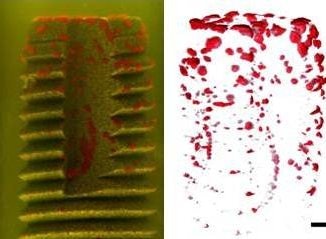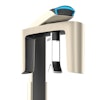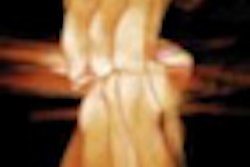
Laser Zentrum Hannover (LZH) has filed a patent application for a scanning laser optical tomography (SLOT) process that has previously yielded high-resolution 3D images of bacteria on dental implant surfaces.
SLOT was originally developed as a 3D fluorescence process for quickly scanning larger samples. It is seen as the optical equivalent to computed tomography and works with isotropic resolution -- that is, with the same resolution in all three spatial planes, LZH noted in a news release.
It simultaneously records transmissive, scattered, and fluorescent light. Samples can thus be imaged with a 3D resolution of at least 1/1000th of the object size, in a short time. The goal of the current project is further development of this promising technology, so that an imaging speed of 20 seconds for 600 individual projections can be reached.

SLOT has several advantages over optical projection tomography, LZH explained: Apart from homogeneous lighting with a 300 times higher photon exploitation and a high signal-to-noise ratio of 10-90 dB, ring artifacts, and speckles can be avoided due to one-dimensional detection.
Among other things, SLOT can be used to determine objects on nontransparent sample surfaces. In 2012, it was used for 3D visualization of bacteria growth on the surface of dental implants, including images of the in vitro development of the microorganisms.



















